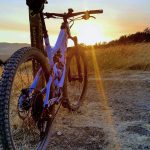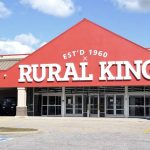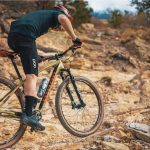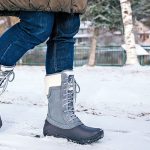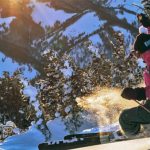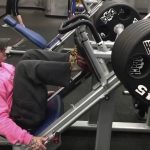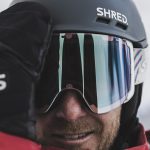Compared with overall retail sales across
the country, the snow sports industry has fared quite well with gains over
last season. Overall sales for the entire winter sports market increased
by 4.9 percent in dollars to $1.69 billion compared to $1.61 billion last
season for the period of August through January 2003, according to the
SnowSports Industries America (SIA) Retail Audit.
The SIA Retail Audit
tracks and reports sales in all snow sports product categories. This is
the fourth of six reports that will look at sales through March 31, 2003,
the end of the winter season.
Sales through the end of January at specialty ski and snowboard shops were
up 7.9 percent compared to the same time period last season. In dollars,
that translates to $1.32 billion in sales compared to $1.22 billion in
2002 and $1.29 billion in 2001. Unit sales were up significantly from last
season tracking 15.5 percent ahead. However, according to Jim Spring of
Leisure Trends Group, “The average retail-selling price dropped to $64.69
from $69.21 last season (-6.5 percent). This indicates that consumer purchases
of higher priced ticket items slowed considerably post December.”
All equipment (alpine, snowboard and Nordic) sales in specialty stores
was flat, tracking at $531.8 million compared to $531.7 in 2002. Alpine
gear increased 2.2 percent or $356.8 million as compared to $348.9 last
year. Snowboard equipment was down just slightly in sales, 4.9 percent
or $151.9 million in sales. Sales for snowboard equipment in 2002 tracked
at $159.7 million. Nordic equipment was also flat, tracking at $23 million.
Apparel and accessories lead the way with the largest gains in specialty
stores up 8.1 percent or $367.7 million and 19.7 percent or $419.1 million,
respectively. Last season, sales for apparel were $340.1 million while
accessories were $350.2 million.
Alpine ski sales were down 6.0 percent to $118.9 million, excluding ski/binding
systems. The average price of skis sold this year is $289 compared to $311
last season. However, junior ski sales, which average $131, are up 35 percent
in units which helped bring the average retail down. Ski/binding system
sales are still surging but not like in preseason. Units were up 82 percent
and dollars 58 percent. However, last season ski/binding systems sold for
an average retail of $718 compared to $621 this season. Midfat skis represent
42 percent of all skis sold even though they have only grown 1.5 percent
in dollars this season. Fat skis and twin tips are up substantially in
dollars, 153.1 percent and 26.8 percent, respectively. However, their units
sales are still relatively small. The second largest category in alpine
skis is juniors, tracking 24 percent ahead in units this season.
Through January 2003, alpine boot sales were up 3.4 percent in dollars
to $136.5 million compared to last season. The gains are in high performance
(up 17 percent in dollars) the largest category, recreation (up 27 percent
in dollars), soft boots (up 127 percent in dollars) and juniors (up 32
percent in dollars). The average retail price has stayed consistent with
2002.
Bindings sales are down 11.2 percent in dollars to $47.4 million excluding
ski/binding systems. However, when you add ski system sales to bindings
sold independent, unit sales are up just slightly. Poles vaulted ahead
13.8 percent in sales to $11.4 million.
Boards, boots, and bindings all tracked behind last season in dollars.
Snowboard sales were down 6.0 percent to $71 million. Snowboard boot sales
were down 3.2 percent ($45.8 million) and snowboard bindings were down
4.9 percent ($35 million).
“Due to the cold weather across the nation, apparel sales have been strong
this year,” said Julie Lynch, Director of Market Research for SIA. Apparel
tops were tracking 11.3 percent ahead of last season in dollars to $207.7
million. Top sale increases were almost all in the double digits or better.
Soft shell parkas gained 93.8 percent in dollars followed by vests (no
fleece) (up 35 percent), sweaters (up 33.9 percent), insulated parkas (up
26.8 percent), and shell parkas (up 10.0 percent). Women’s insulated parka
unit sales are ahead of men’s and junior’s are up 28.5 percent. In addition,
junior shells are up 175 percent this season so far. The only category
to miss was fleece (including vest), down slightly by 0.5 percent. Suits
are up 12.8 percent in dollars to $14.9 million.
Bottoms were also up 9.5 percent in dollars to $77.3 million. The action
is in the insulated waist pants and juniors catergory.
Snowboard apparel was down slightly 2.5 percent to $67.8 million. According
to Spring, “This category is better than it appears. For two seasons close-out
merchandise cluttered the sale picture. It is almost gone. New snowboard
tops are up 9.9 percent in dollars and bottoms are up 8.3 percent.”
After a rough season last year, snow has breathed life into almost all
accessories categories. Equipment accessories were up 14.7 percent to $206.4
million. Leading the way in dollar gains are goggles and helmets, up 37.8
percent and 31.8 percent, respectively. Also doing well are auto racks.
Apparel accessories were even farther ahead, up 24.9 percent to $212.7
million. All categories made substantial gains, however; base layers (up
31.1 percent in dollars), turtlenecks (up 47.9 percent in dollars) and
headwear (up 39.5 percent in dollars) saw the largest gains.

